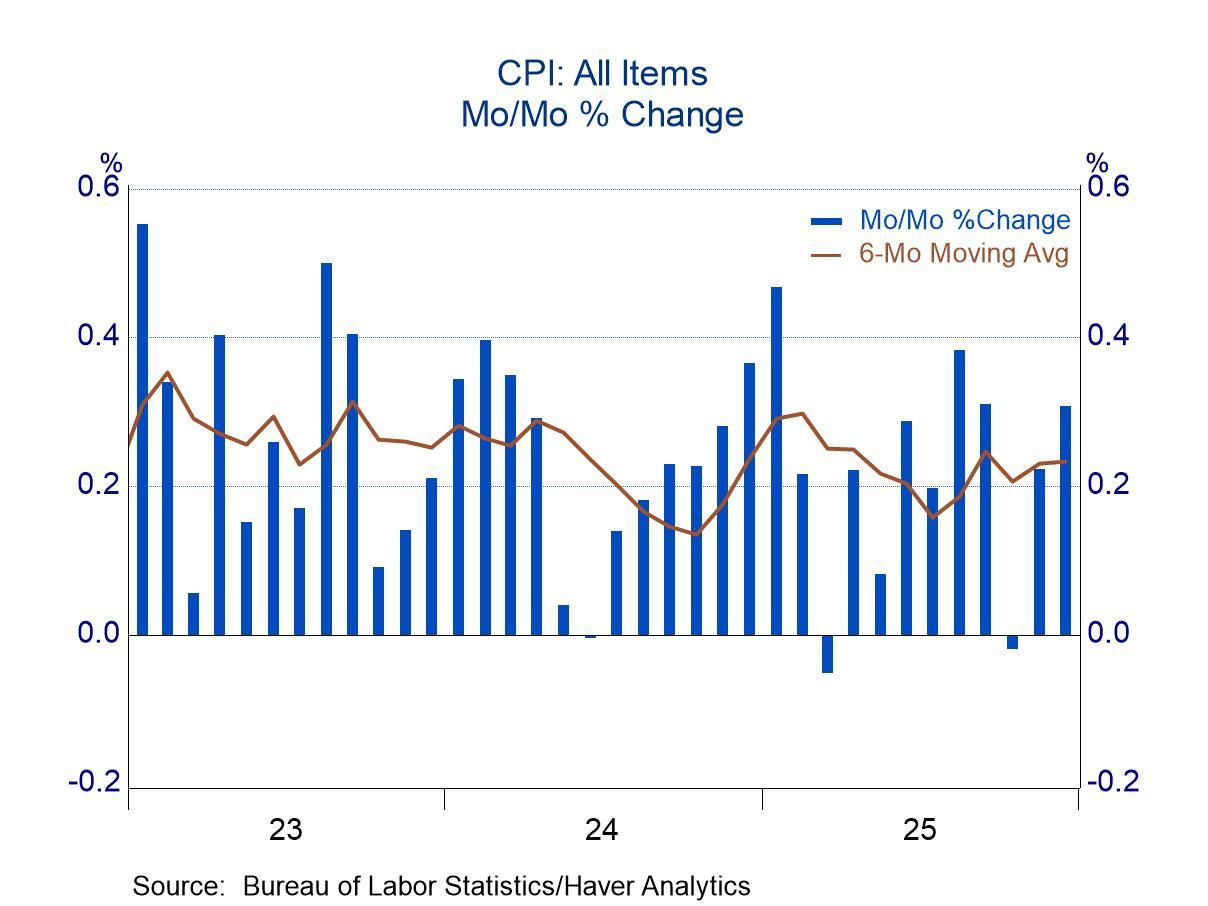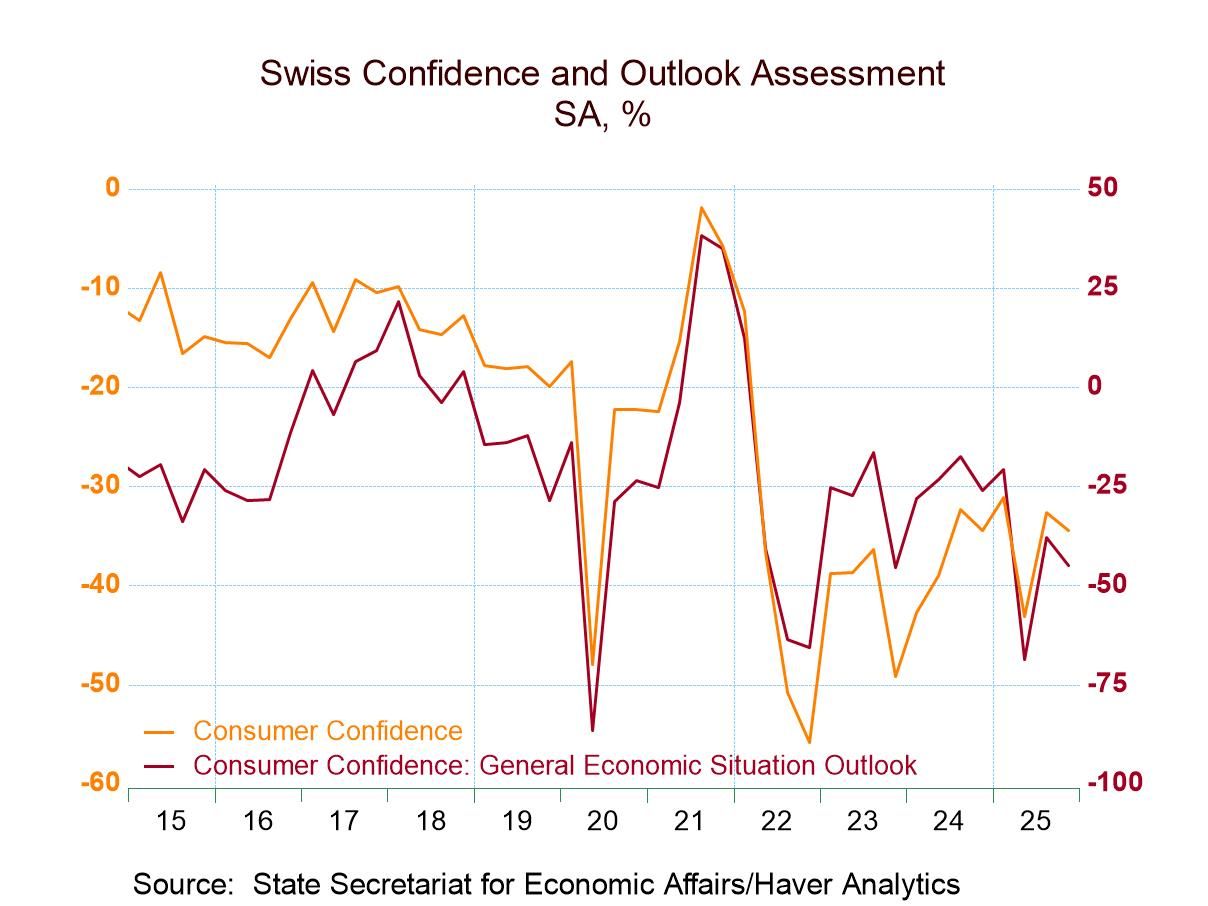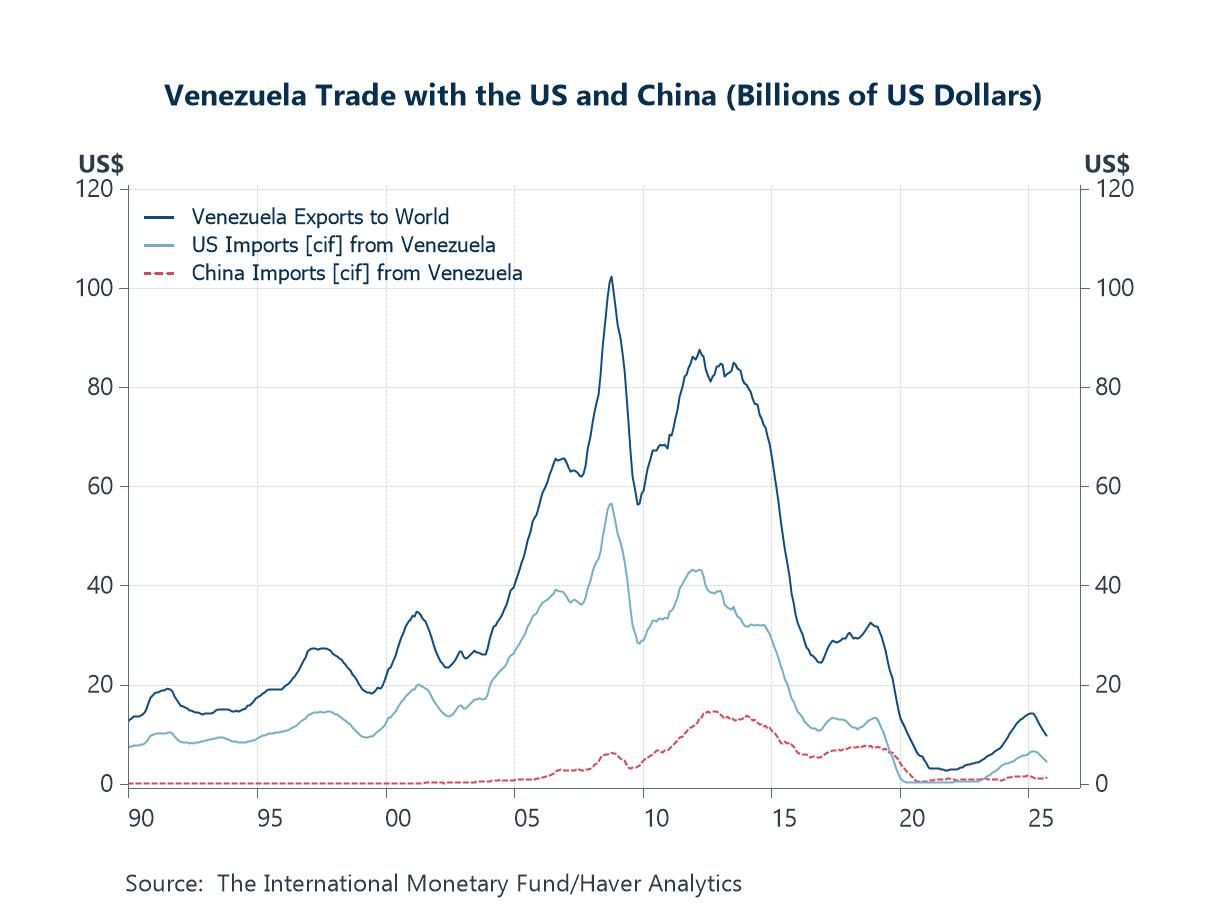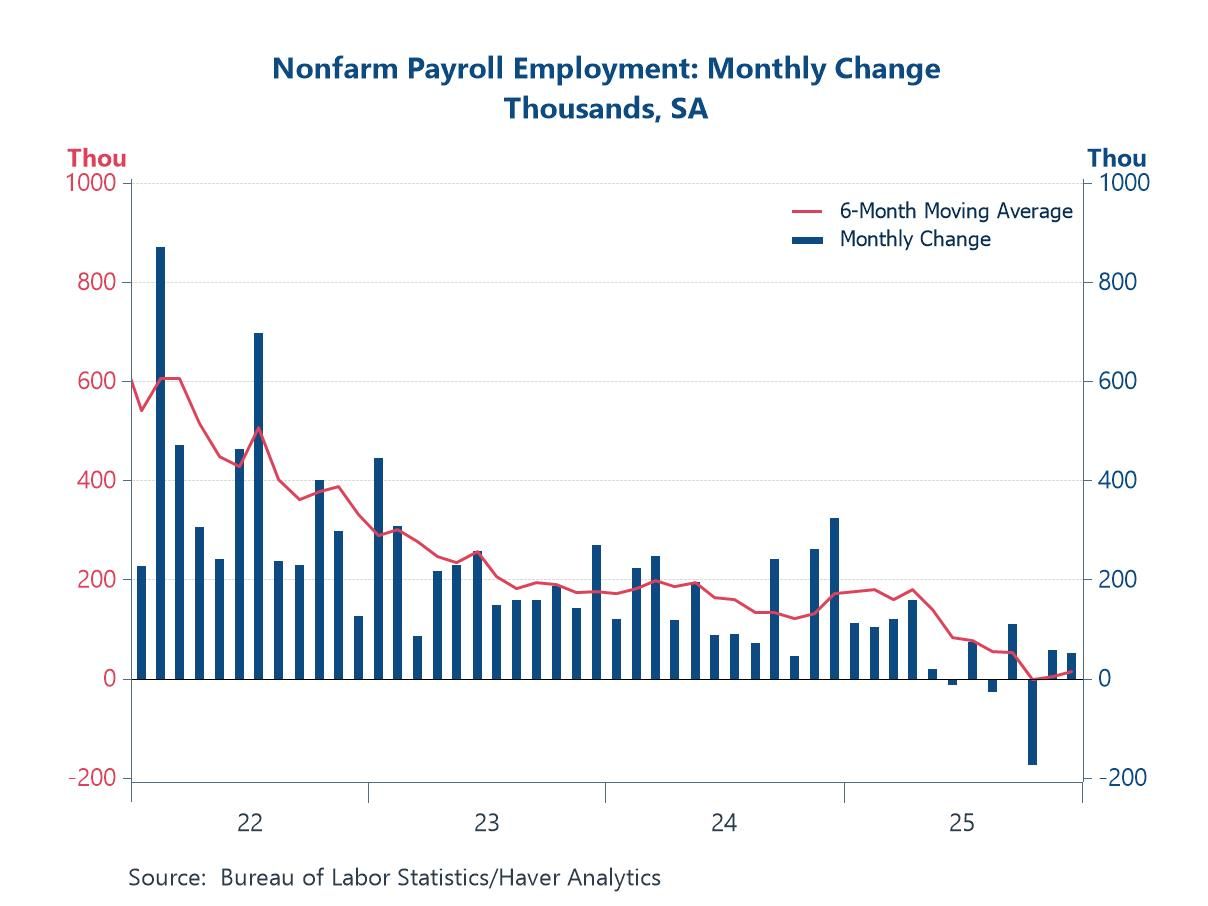U.S. Payroll Growth in August Bests July’s, but Earnings Growth Is Negligible and Unemployment Rate Jumps
by:Tom Moeller
|in:Economy in Brief
Summary
- July & June payroll readings are revised significantly lower.
- Earnings growth is weakest in 18 months.
- Jobless rate jumps; labor force growth surges but job growth is moderate.


Nonfarm payrolls increased 187,000 during August (2.0% y/y) after rising 157,000 in July, revised from 187,000, and 105,000 in June, shaved from 185,000. The August reading has slowed considerably from a 242,000 average monthly gain during the first seven months of the year. Expectations had been for a 160,000 rise in the Action Economics Forecast Survey.
Average hourly earnings edged 0.2% higher in August after two months of 0.4% increase. The 4.3% y/y earnings increase remains below a high of 5.9% y/y in March 2022. A 0.3% August increase had been expected.
The unemployment rate, measured in the household survey, jumped to 3.8% in August from 3.5% in July. It was the highest rate since February 2022. Expectations had been for 3.5%. Household employment increased 222,000 after rising 268,000 in July. The labor force strengthened 736,000 following a 152,000 rise. The overall unemployment rate, including workers who were marginally attached & working part-time for economic reasons, rose to 7.1% from 6.7% in July.
In the establishment survey, private-sector employment rose 179,000 in August (2.0% y/y) after a 155,000 July increase. Factory sector jobs increased 16,000 (0.7% y/y) after falling 4,000 during July. Construction sector employment rose 22,000 (2.6% y/y) after a 16,000 July increase.
Private service-producing employment posted a 143,000 increase in August (2.1% y/y) after improving 141,000 in July. Industry performance remained mixed. Education & health care jobs gained 102,000 (4.2% y/y). The number of leisure & hospitality jobs rose 40,000 (4.2% y/y) while financial activities employment rose 4,000 (1.0% y/y). Professional & business services employment rose 19,000 (1.3% y/y) include ing an 18,900 decline (-6.1% y/y) in temporary help employment. To the downside, trade, transportation & utilities employment fell 20,000 (+0.3% y/y) and information sector payrolls fell 15,000 (-1.9% y/y).
Government sector payrolls rose 8,000 last month (1.8% y/y) after increasing 2,000 in July. Federal government jobs rose 10,000 (4.0% y/y), but state government employment held steady (+ 2.3% y/y) in August. Local government jobs eased 2,000 (+1.4% y/y).
Private-sector average hourly earnings rose 0.2% in August. Earnings in the goods-producing sector improved 0.1% (5.2% y/y). Earnings in construction also rose a greatly lessened 0.1% (5.2% y/y), while factory sector earnings held steady (+5.0% y/y). In the private services sector, earnings rose 0.3%. The y/y increase of 4.1% is reduced from a high of 6.1% in March 2022. Financial activities earnings jumped 1.1% (5.6% y/y). Trade, transportation & utilities sector pay increased 0.4% (4.9% y/y) last month. Private education and health services pay increased 0.3% (3.1% y/y) for a third consecutive month. Leisure & hospitality earnings gained 0.2% (5.0% y/y), well below the 14.0% y/y peak in December 2021. Information sector pay edged 0.1% higher (1.8% y/y) in August. Professional & business sector earnings eased 0.1% (+4.2% y/y).


The length of the average workweek edged higher to 34.4 hours in August but remained down from a peak of 35.0 hours in January 2021. The workweek in the goods-producing sector rose to 39.9 hours. The construction sector average workweek lengthened to 39.1 hours, while the factory sector workweek remained at 40.1 hours for the fifth straight month. The average workweek in the private service sector was 33.3 hours for a sixth consecutive month, but remained below the 34.0 hour high early in 2021. Financial sector hours eased to 37.4 and information services hours remained at 36.2. Professional & business service hours held at 36.5 hours for the third consecutive month, but were down from a January 2021 high of 36.9, while leisure & hospitality hours remained at 25.2 in August.
The private sector aggregate weekly hours index, a key indicator of production and income, rose 0.4% (1.8% y/y) following a 0.2% July decline.
In the household survey, the rise in the unemployment rate to 3.8% in August and was accompanied by an increased 62.8% labor force participation rate after five straight months at 62.6%. The participation rate for teenagers rose to 36.9% but remained below a November high of 37.8%. For workers aged 20-24, the rate rose to 71.2% and compared to a high of 72.0% in February & March. For workers aged 25-54, the rate rose to 83.5%, the highest level since May 2002. For individuals 55 and over, the rate edged up to 38.8% in August, but remained well below its 40.5% peak in July 2019.
The employment/population ratio for all workers held at 60.4%. It remained below its reading of 61.1% in February 2020 just prior to the pandemic.
The average duration of unemployment eased in August to 20.4 weeks from 20.6 weeks in the prior month, remaining below a 32.0 week high in June of 2021. The median duration of unemployment held at 8.7 weeks for the third straight week, and remained below its 19.9 high in June 2021.
The employment and earnings data are collected from surveys taken each month during the week containing the 12th day of the month. The labor market data are contained in Haver's USECON database. Detailed figures are in the EMPL and LABOR databases. The expectations figures are in the AS1REPNA database.


Tom Moeller
AuthorMore in Author Profile »Prior to joining Haver Analytics in 2000, Mr. Moeller worked as the Economist at Chancellor Capital Management from 1985 to 1999. There, he developed comprehensive economic forecasts and interpreted economic data for equity and fixed income portfolio managers. Also at Chancellor, Mr. Moeller worked as an equity analyst and was responsible for researching and rating companies in the economically sensitive automobile and housing industries for investment in Chancellor’s equity portfolio. Prior to joining Chancellor, Mr. Moeller was an Economist at Citibank from 1979 to 1984. He also analyzed pricing behavior in the metals industry for the Council on Wage and Price Stability in Washington, D.C. In 1999, Mr. Moeller received the award for most accurate forecast from the Forecasters' Club of New York. From 1990 to 1992 he was President of the New York Association for Business Economists. Mr. Moeller earned an M.B.A. in Finance from Fordham University, where he graduated in 1987. He holds a Bachelor of Arts in Economics from George Washington University.






 Asia
Asia